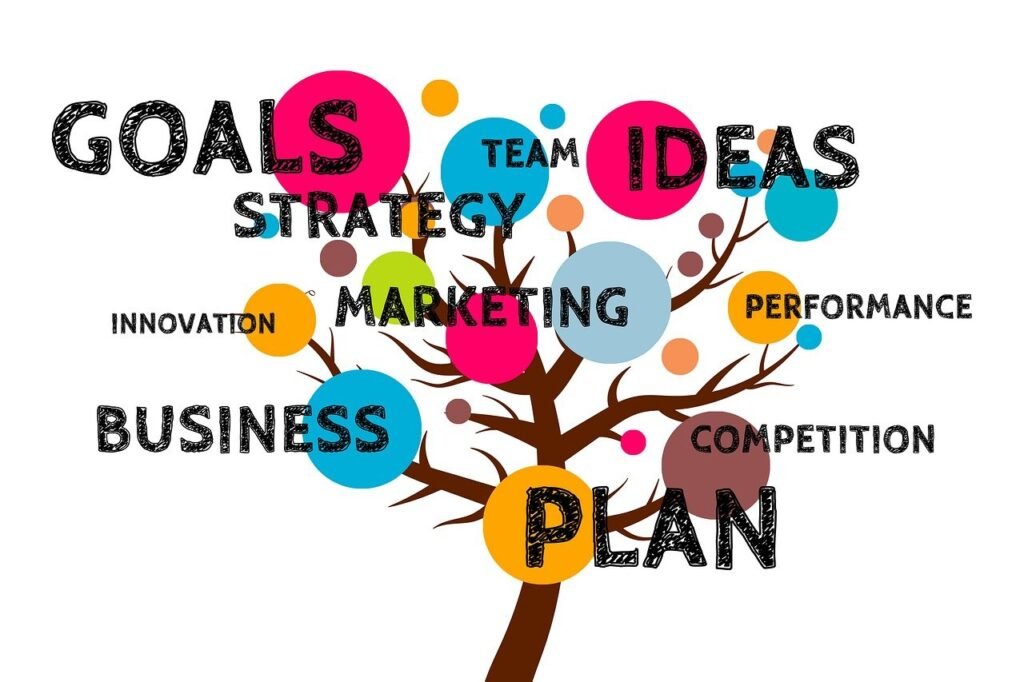“I think it is possible for ordinary people to choose to be extraordinary.” – Elon Musk, Founder, CEO, the lead designer of SpaceX.
“Your most unhappy customers are your greatest source of learning.” – Bill Gates, Microsoft Founder, and former CEO.
“Don’t worry about failure; you only have to be right once.” -Drew Houston, Dropbox Co-Founder, and CEO.
Table of Contents
1. Introduction to Startup Ideas

Defining Startup Ideas
“Defining Startup Ideas” is the cornerstone of every entrepreneurial journey. It entails identifying innovative concepts that address specific market needs or challenges. This process often begins with thorough market research, where entrepreneurs analyze trends, consumer behavior, and industry gaps. Successful startup ideas emerge from this analysis, offering unique solutions or products that cater to unmet demands. By defining startup ideas clearly, entrepreneurs can chart a strategic course for their businesses, aligning their efforts with market opportunities and maximizing their chances of success.
Importance of Innovative Ideas
The significance of innovative ideas cannot be overstated in the realm of entrepreneurship. These ideas serve as the lifeblood of startups, fueling their growth and differentiation in competitive markets. Understanding the importance of innovative ideas begins with recognizing their role in driving business innovation and evolution. Innovative ideas have the power to disrupt industries, challenge conventional wisdom, and spark positive change. Moreover, they enable startups to carve out unique value propositions, attracting customers, investors, and talent. By embracing innovative ideas, startups can stay ahead of the curve, adapt to changing market dynamics, and create lasting impact in their respective industries.
2. The Process of Generating Startup Ideas
Brainstorming Techniques
“Brainstorming Techniques” are essential in the process of generating startup ideas, serving as catalysts for innovation and creativity. These techniques involve collaborative sessions where team members share diverse perspectives and insights to generate a wide range of ideas. One effective method is the classic brainstorming session, where participants freely contribute ideas without criticism or judgment. Another technique is mind mapping, which visually organizes ideas in a hierarchical structure, allowing for easy exploration and expansion of concepts.
In addition to traditional methods, startups can also utilize SCAMPER, a creative thinking technique that prompts participants to explore ideas through different lenses. SCAMPER stands for Substitute, Combine, Adapt, Modify, Put to another use, Eliminate, and Rearrange. This approach encourages participants to think outside the box and consider unconventional solutions to problems. By incorporating SCAMPER into brainstorming sessions, startups can uncover unique and innovative ideas that have the potential to disrupt industries.
Identifying Market Gaps
“Identifying Market Gaps” is a critical step in the process of generating startup ideas, as it involves pinpointing unmet needs or underserved segments within the market. This process begins with comprehensive market research to identify areas where existing solutions fall short or fail to adequately address consumer demands. Startups can utilize various methods such as surveys, interviews, and data analysis to gain insights into customer pain points and preferences.
Furthermore, startups can employ competitive analysis to identify gaps in the market by studying competitors’ offerings and identifying areas where they may be lacking or where opportunities exist for differentiation. By understanding competitors’ strengths and weaknesses, startups can position themselves strategically to fill the gaps and offer unique value propositions.
3. Validation and Research

Market Research
“Market Research” is a crucial aspect of the validation and research phase in the startup ideation process. It involves gathering and analyzing information about the target market to gain insights into customer needs, preferences, and behavior. Startups can employ various research methods, including qualitative and quantitative approaches, to collect data and inform their decision-making processes.
Qualitative market research methods, such as interviews, focus groups, and observational studies, allow startups to delve deep into the motivations and preferences of their target audience. By conducting in-depth interviews or facilitating group discussions, startups can uncover valuable insights that may not be captured through quantitative data alone.
Feasibility Validation
“Feasibility Validation” is a crucial step in the validation and research phase of the startup ideation process. It involves assessing the viability and practicality of a startup idea to determine whether it has the potential to succeed in the market. Startups can employ various methods to validate the feasibility of their ideas, including market testing, prototype development, and financial analysis.
Market testing allows startups to gather feedback from potential customers and gauge interest in their product or service. This can be done through methods such as beta testing, pilot programs, or crowdfunding campaigns. By collecting feedback and observing user behavior, startups can identify strengths and weaknesses in their offering and make necessary adjustments before fully launching.
Prototype development is another essential aspect of feasibility validation, particularly for products or services that require development or manufacturing. Startups can create prototypes or minimum viable products (MVPs) to test functionality, usability, and market fit. By iterating on prototypes based on user feedback and testing results, startups can refine their offerings and improve their chances of success.
4. Characteristics of Successful Startup Ideas
Problem-Solving Approach
“Problem-Solving Approach” is a fundamental characteristic of successful startup ideas, as it involves addressing real-world problems or unmet needs in the market. Startups that adopt a problem-solving approach focus on identifying pain points or challenges faced by their target audience and developing innovative solutions to alleviate them. By understanding the specific problems their customers face, startups can create products or services that provide tangible value and resonate with their target market.
Scalability and Market Demand
“Scalability and Market Demand” are two key characteristics of successful startup ideas that contribute to their long-term viability and growth potential. Scalability refers to the ability of a startup to expand its operations and increase its revenue without proportional increases in costs or resources. Successful startup ideas are inherently scalable, allowing them to capitalize on growing market opportunities and meet increasing demand without being hindered by limitations in production, distribution, or infrastructure.
Moreover, successful startup ideas are founded on a deep understanding of market demand and consumer behavior. Startups that identify and address existing market gaps or underserved needs have a higher likelihood of success. By offering products or services that resonate with their target audience and fulfill unmet demands, startups can tap into a ready market and generate widespread interest and adoption.
5. Creative Thinking and Innovation

Thinking Outside the Box
“Thinking Outside the Box” is a hallmark of creative thinking and innovation, empowering startups to break free from conventional norms and explore new possibilities. This approach encourages entrepreneurs to challenge existing paradigms, question assumptions, and explore unconventional ideas that may lead to groundbreaking innovations. By embracing a business mindset of thinking outside the box, startups can uncover unique solutions to complex problems and differentiate themselves in the market.
Moreover, thinking outside the box fosters a culture of experimentation and risk-taking within startups, where failure is viewed not as a setback but as a stepping stone to success. By encouraging employees to think creatively and explore alternative approaches, startups can foster a dynamic and innovative work environment that cultivates continuous learning and growth. This approach not only fuels innovation but also empowers startups to stay ahead of the curve and adapt to changing market dynamics effectively.
Harnessing Creativity
“Harnessing Creativity” is essential for startups aiming to unleash their full potential and drive innovation. This involves creating an environment that nurtures and encourages creative thinking among team members. Startups can achieve this by fostering a culture of openness, where ideas are welcomed and valued regardless of their origin or feasibility. By providing platforms for brainstorming sessions, collaborative discussions, and idea sharing, startups can tap into the diverse perspectives and creativity of their team members.
Moreover, startups can harness creativity by providing resources and support to facilitate experimentation and exploration. This may include allocating time for employees to pursue passion projects, providing access to tools and technologies that facilitate creativity, and offering training and development opportunities to enhance creative skills. By investing in creativity, startups can unlock new avenues for innovation and problem-solving, driving growth and differentiation in the market.
6. Testing and Iteration
Prototyping and Testing
“Prototyping and Testing” are integral components of the testing and iteration phase in the startup development process. Prototyping involves creating preliminary versions of products or services to test their functionality, usability, and market fit. Startups can use various prototyping techniques, such as paper prototyping, wireframing, or rapid prototyping, to quickly iterate on ideas and gather feedback from users.
Once prototypes are developed, startups engage in rigorous testing to assess their viability and effectiveness. This may involve conducting user testing sessions, gathering feedback from beta testers, or analyzing data from pilot programs. By testing prototypes with real users in real-world scenarios, startups can identify strengths, weaknesses, and areas for improvement before fully launching their products or services.
Furthermore, prototyping and testing enable startups to iterate on their ideas and refine their offerings based on user feedback and testing results. This iterative approach allows startups to continuously improve their products or services, ensuring they meet the evolving needs and preferences of their target audience. By embracing prototyping and testing as essential steps in the development process, startups can increase the likelihood of success and create products or services that truly resonate with their customers.
Iterating Based on Feedback
“Iterating Based on Feedback” is a crucial aspect of the testing and iteration phase in the startup development process. It involves analyzing feedback gathered from users, stakeholders, and other relevant sources and using that information to make iterative improvements to the product or service. Startups prioritize continuous refinement and enhancement to ensure that their offerings align with customer needs and preferences.
Upon receiving feedback, startups carefully evaluate each insight and identify patterns or recurring themes. They prioritize feedback that aligns with their product vision and addresses significant pain points or areas for improvement. By synthesizing feedback from multiple sources, startups gain a comprehensive understanding of user needs and preferences, enabling them to make informed decisions about product enhancements.
7. Pitching and Presenting Ideas

Crafting Compelling Pitches
Crafting compelling pitches is not just about delivering information; it’s about storytelling and creating an emotional connection with the audience. Startups must engage their listeners by sharing captivating anecdotes, illustrating real-world examples, and painting a vivid picture of the problem their solution solves. By weaving a narrative that captures attention and resonates with the audience’s emotions, startups can leave a lasting impression and inspire action.
A well-crafted pitch not only conveys the value of the startup’s offering but also sparks curiosity and enthusiasm, compelling listeners to learn more and potentially become supporters or investors. Through effective communication techniques such as clear messaging, impactful visuals, and confident delivery, startups can convey their passion and conviction, instilling confidence in their vision and building credibility with their audience.
Communicating Value Proposition
“Communicating Value Proposition” is a crucial aspect of pitching and presenting ideas, as it involves clearly articulating the unique benefits and advantages of the startup’s product or service. Startups must effectively convey how their offering solves a specific problem or meets a particular need in the market. This requires succinctly defining the value proposition in a way that resonates with the target audience and differentiates the startup from competitors.
8. Resources and Support for Startups
Incubators and Accelerators
“Incubators and Accelerators” play a vital role in providing resources and support for startups, offering a structured environment conducive to growth and development. Incubators typically provide startups with physical workspace, access to mentors and advisors, and networking opportunities with other entrepreneurs. They offer guidance and support in various areas, including business strategy, product development, marketing, and fundraising. By participating in an incubator program, startups can benefit from a supportive ecosystem that fosters collaboration, innovation, and knowledge sharing.
Accelerators, on the other hand, offer more intensive and time-limited programs designed to accelerate the growth of startups. These programs typically provide startups with seed funding, mentorship, and access to a network of investors and industry experts. Accelerators often culminate in a demo day where startups pitch their ideas to potential investors. By participating in an accelerator program, startups can gain valuable insights, connections, and resources to accelerate their growth and increase their chances of success in the market.
Both incubators and accelerators offer invaluable support and resources for startups at different stages of their journey. Whether seeking guidance in the early stages of development or looking to accelerate growth and scale operations, startups can benefit from the structured programs, mentorship, and networking opportunities provided by these organizations.
Accessing Funding and Mentorship
“Accessing Funding and Mentorship” is a critical aspect of the startup journey, as it provides essential support and resources for growth and success. Startups often face challenges in securing funding and finding mentors who can provide guidance and support. However, there are various avenues available for startups to access funding and mentorship, including angel investors, venture capital firms, crowdfunding platforms, and mentorship programs offered by incubators and accelerators.
Angel investors are individuals who provide capital and mentorship to startups in exchange for equity ownership. They often have experience in entrepreneurship and can offer valuable insights, connections, and guidance to startups. Venture capital firms, on the other hand, invest larger sums of money in startups in exchange for equity ownership. They typically focus on high-growth potential companies and provide mentorship, networking opportunities, and strategic guidance to help startups scale their operations.
9. Challenges and Pitfalls

Common Challenges
“Common Challenges” encompass a myriad of obstacles that startups often encounter on their journey to success. These may include issues such as funding constraints, market saturation, fierce competition, and limited resources. Navigating these challenges requires resilience, strategic thinking, and adaptability.
Moreover, startups may face internal challenges such as team dynamics, leadership struggles, and organizational inefficiencies. Overcoming these hurdles demands effective communication, strong leadership, and a collaborative team spirit. By recognizing and addressing these common challenges head-on, startups can enhance their resilience and increase their chances of long-term success in the competitive startup landscape.
Avoiding Pitfalls
“Avoiding Pitfalls” is paramount for startups aiming to navigate the complex terrain of entrepreneurship with success. These pitfalls can range from poor financial management and inadequate market research to a lack of scalability or failure to adapt to changing market conditions. By proactively identifying and addressing potential pitfalls, startups can mitigate risks and increase their chances of sustainable growth and success.
Furthermore, startups must prioritize continuous learning, flexibility, and a willingness to pivot when necessary. Avoiding pitfalls requires a proactive approach to risk management, thorough planning, and a commitment to ongoing evaluation and refinement of strategies. By staying vigilant and agile, startups can steer clear of common pitfalls and chart a course toward achieving their goals and objectives.
10. Success Stories and Inspirations
Examples of Successful Startup Ideas
“Examples of Successful Startup Ideas” serve as valuable sources of inspiration and learning for aspiring entrepreneurs. These success stories highlight innovative solutions that have disrupted industries, solved pressing problems, and captured market opportunities. By studying these examples, startups can gain insights into the key factors that contributed to their success, such as unique value propositions, effective market positioning, and scalable business models.
Moreover, successful startup ideas showcase the power of creativity, perseverance, and strategic thinking in overcoming challenges and achieving sustainable growth. Whether it’s a revolutionary tech startup, a socially impactful venture, or a disruptive business model, these examples demonstrate the endless possibilities for innovation and entrepreneurship. By drawing inspiration from successful startup ideas, entrepreneurs can fuel their own creativity, drive, and determination to pursue their entrepreneurial dreams and make a meaningful impact in the world
Drawing Inspiration
“Drawing Inspiration” is essential for startups seeking to ignite creativity, fuel motivation, and overcome challenges on their entrepreneurial journey. Inspiration can come from various sources, including successful entrepreneurs, industry leaders, historical figures, personal experiences, and everyday observations. By actively seeking inspiration, startups can uncover new ideas, perspectives, and opportunities that spark innovation and drive progress.
Moreover, drawing inspiration fosters a mindset of curiosity, exploration, and open-mindedness, enabling startups to break free from conventional thinking and explore uncharted territories. Whether it’s studying the success stories of iconic entrepreneurs like Steve Jobs, learning from the failures and triumphs of past startups, or finding inspiration in nature and the world around us, startups can cultivate a rich reservoir of ideas and insights to fuel their creativity and vision.
11. Conclusion
In conclusion, mastering the art of generating startup ideas is essential for every entrepreneur navigating the dynamic landscape of innovation and business. By implementing the tips outlined in this article, entrepreneurs can unlock their creative potential, identify lucrative market opportunities, and develop innovative solutions that address real-world challenges.
Whether it’s embracing a problem-solving approach, leveraging market research and trends, or fostering creativity and innovation, each tip offers valuable insights and strategies to guide entrepreneurs on their journey to startup success. With dedication, resilience, and a willingness to think outside the box, entrepreneurs can turn their ideas into reality and create impactful ventures that drive positive change in the world.
FAQs (Frequently Asked Questions)
1. How do I know if my startup idea is worth pursuing?
- Look for validation through market research, customer feedback, and feasibility testing. If there’s a genuine need or demand for your idea, it’s worth pursuing.
2. How can I protect my startup idea from being copied?
- While you can’t copyright or patent an idea alone, you can protect your startup through trademarks, patents, and non-disclosure agreements (NDAs) with collaborators and partners.
3. What if my startup idea fails?
- Failure is a natural part of the entrepreneurial journey. Learn from your mistakes, pivot if necessary, and use your experience to fuel future success.
4. How can I overcome writer’s block when brainstorming startup ideas?
- Take breaks, seek inspiration from diverse sources, collaborate with others, and embrace experimentation. Sometimes, stepping away from the problem can lead to breakthrough insights.



